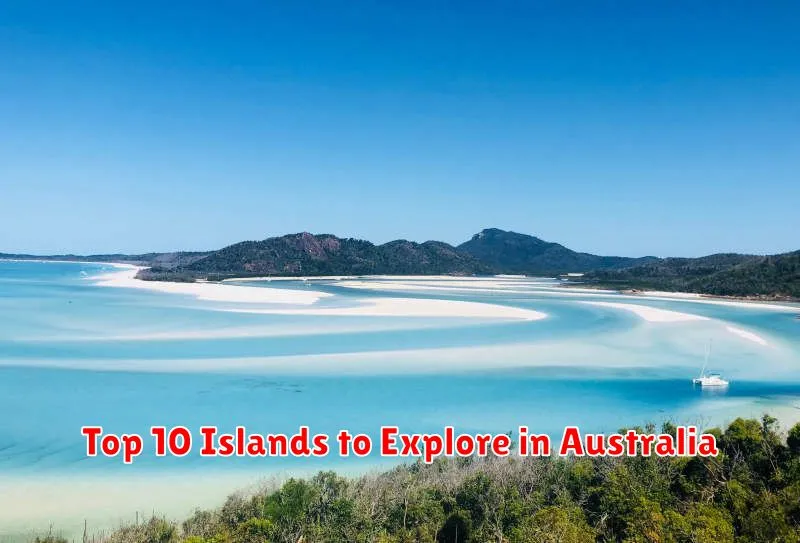Australia, a land of diverse landscapes and breathtaking beauty, is also home to a plethora of stunning islands. From tropical paradises in the north to rugged, windswept havens in the south, these islands offer unique experiences for every traveler. Whether you’re seeking pristine beaches, vibrant coral reefs teeming with marine life, encounters with unique wildlife, or thrilling adventure activities, the islands of Australia have something to offer. Embark on a journey of discovery as we explore the top ten islands to explore in Australia, each a jewel in the crown of this remarkable continent. Discover the magic of these Australian islands and plan your next unforgettable escape.
This carefully curated list highlights the top 10 islands in Australia that deserve a spot on your travel itinerary. From the world-renowned beauty of Tasmania to the lesser-known gems scattered along the coast, these islands offer an array of unique experiences. Prepare to be captivated by the diverse landscapes, from lush rainforests and towering cliffs to white-sand beaches and azure waters. Whether you’re a seasoned traveler seeking adventure or a family looking for a relaxing getaway, this guide will help you choose the perfect Australian island to explore. Dive in and discover the best islands Australia has to offer.
Whitsunday Islands, Queensland
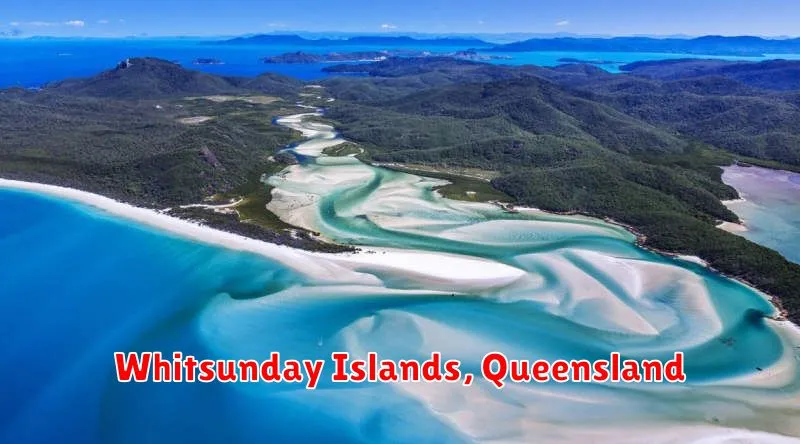
Located in the heart of the Great Barrier Reef, the Whitsunday Islands offer an unparalleled tropical escape. This group of 74 continental islands boasts dazzling white sand beaches, crystal-clear turquoise waters, and vibrant coral reefs teeming with marine life.
Whitehaven Beach, consistently ranked among the world’s best beaches, is a must-see. Its silica sand is incredibly pure and soft, creating a stunning contrast against the azure waters.
Activities abound, from sailing and snorkeling to diving and bushwalking. Explore the underwater wonders of the reef, hike to panoramic viewpoints, or simply relax on the pristine beaches and soak up the sun.
Heart Reef, a naturally formed coral formation in the shape of a heart, is an iconic aerial view and a popular destination for scenic flights.
Fraser Island (K’gari), Queensland
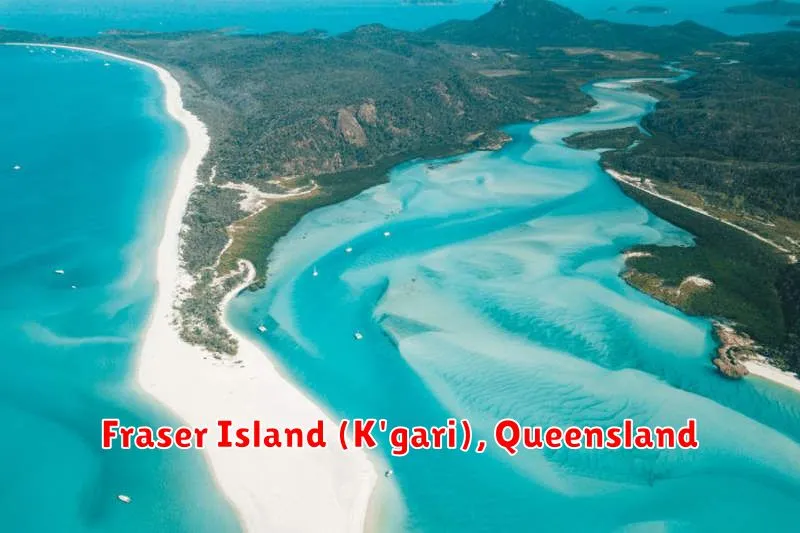
Fraser Island, also known by its Indigenous name K’gari, holds the distinction of being the world’s largest sand island. Located off the coast of Queensland, this UNESCO World Heritage site offers a unique ecosystem.
Visitors can explore the island’s freshwater lakes, including the iconic Lake McKenzie, known for its crystal-clear water and white silica sand. The island also features ancient rainforests, towering sand dunes, and diverse wildlife, including dingoes.
Four-wheel driving is a popular activity, allowing exploration of the island’s beaches and inland tracks. Visitors can also enjoy camping, hiking, and swimming.
Rottnest Island, Western Australia
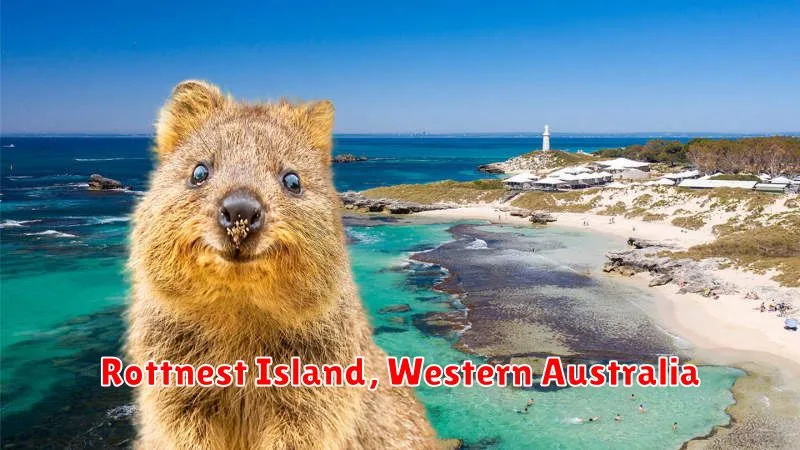
Located just a short ferry ride from Perth, Rottnest Island offers a unique island escape. Car-free and teeming with wildlife, it’s a haven for nature lovers.
The island is most famous for its adorable residents, the quokkas. These small marsupials are known for their friendly nature and photogenic smiles. Beyond quokka spotting, visitors can enjoy pristine beaches, snorkeling in crystal-clear waters, and exploring the island’s history.
Cycling is a popular way to get around and discover hidden bays and scenic lookouts. Rottnest Island provides a refreshing blend of relaxation and adventure, making it a must-visit destination in Western Australia.
Kangaroo Island, South Australia
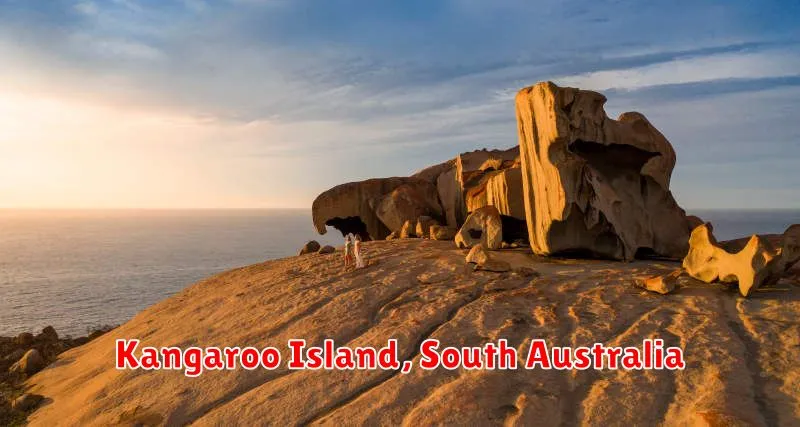
Kangaroo Island, the third-largest island in Australia, offers a unique blend of wildlife encounters and stunning natural beauty. Located southwest of Adelaide, it boasts diverse landscapes, from rugged coastlines and dense bushland to rolling hills and pristine beaches.
Often referred to as a ‘zoo without fences’, Kangaroo Island is home to a remarkable array of native Australian animals. Visitors have a high probability of encountering kangaroos, koalas, sea lions, and various bird species in their natural habitat. Flinders Chase National Park, located on the western end of the island, is a prime location for wildlife viewing and features remarkable geological formations such as the Remarkable Rocks and Admirals Arch.
Beyond wildlife, Kangaroo Island also provides opportunities for bushwalking, camping, and exploring the diverse flora and fauna. Visitors can also enjoy local produce, including fresh seafood and Ligurian honey, further enriching their experience on this captivating island.
Lord Howe Island, New South Wales
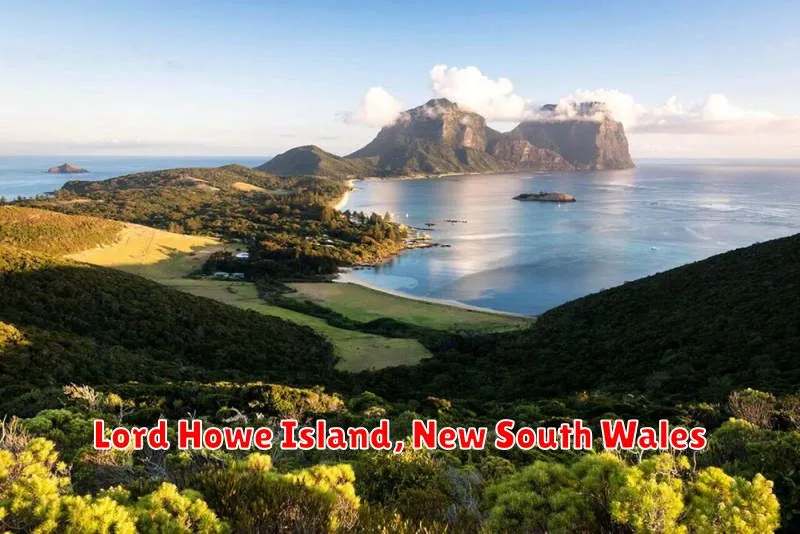
Lord Howe Island is a crescent-shaped island located in the Tasman Sea, about 600km east of mainland Australia. This World Heritage-listed paradise is known for its pristine beauty, limit on visitors (400 at any one time), and unique biodiversity.
Visitors can enjoy a variety of activities, including hiking, snorkeling, diving, birdwatching, and fishing. The island’s twin peaks, Mount Gower and Mount Lidgbird, offer stunning views.
Endemic species abound, both on land and in the surrounding waters. The Lord Howe Island woodhen, a flightless bird once near extinction, is a remarkable conservation success story.
Bruny Island, Tasmania
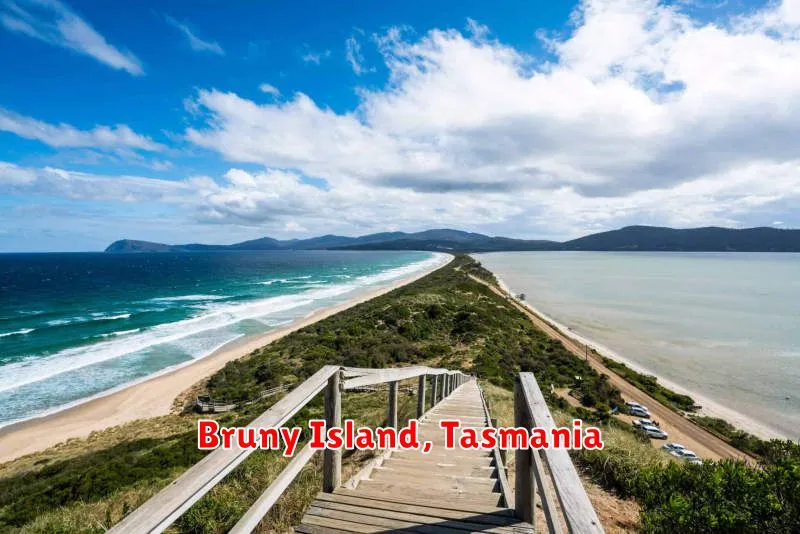
Located off the southeastern coast of Tasmania, Bruny Island offers a unique blend of wildlife, dramatic coastal scenery, and local produce. The island is actually two islands, North and South Bruny, joined by a narrow isthmus called “The Neck”.
Adventure Bay on South Bruny is a popular spot for viewing fairy penguins. The island is also home to diverse birdlife, including the endangered forty-spotted pardalote. Cape Bruny Lighthouse, perched atop dramatic cliffs, offers spectacular views.
Bruny Island is renowned for its food and drink. Sample fresh oysters, locally made cheeses, and handcrafted beers and wines at various establishments throughout the island.
Magnetic Island, Queensland

Located just off the coast of Townsville, Magnetic Island, affectionately known as “Maggie,” offers a unique blend of natural beauty and laid-back charm. Over half of the island is designated national park, providing ample opportunities for exploring diverse landscapes and encountering native Australian wildlife.
Koalas are frequently spotted in the eucalyptus trees, while rock wallabies can be found sunning themselves on the granite boulders. The island’s bays and beaches offer calm waters perfect for swimming, snorkeling, and kayaking.
Visitors can explore the historic Forts Complex, remnants of World War II, or hike to the summit of Mount Cook for panoramic views. For a more relaxed experience, simply unwind on one of the many picturesque beaches and soak up the tropical atmosphere.
Phillip Island, Victoria
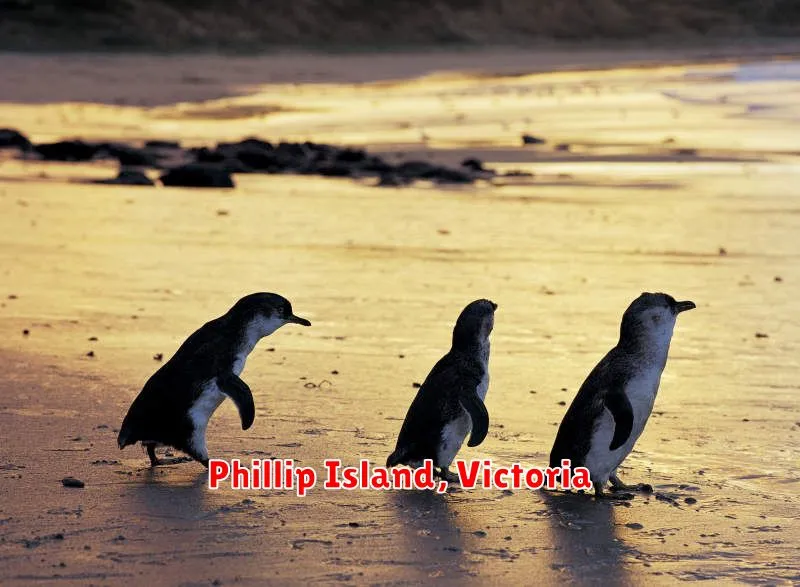
Located just a short drive from Melbourne, Phillip Island offers a unique blend of wildlife encounters and breathtaking coastal scenery. This small island is renowned for its Penguin Parade, a nightly spectacle where thousands of Little Penguins waddle ashore after a day of fishing.
Beyond the penguins, Phillip Island boasts dramatic cliffs, pristine beaches, and opportunities for surfing, swimming, and exploring the rugged coastline. The Koala Conservation Centre provides a chance to observe koalas in their natural habitat, while the Churchill Island Heritage Farm offers a glimpse into the island’s agricultural past.
Tiwi Islands, Northern Territory
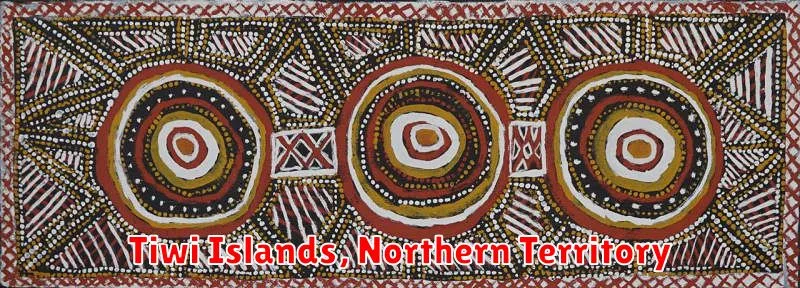
Located just north of Darwin, the Tiwi Islands offer a unique cultural experience. Known as the “Islands of Smiles,” these islands are Aboriginal-owned and offer a glimpse into a rich and vibrant culture.
The two main islands, Bathurst and Melville, are known for their stunning natural beauty, including pristine beaches, lush rainforests, and abundant wildlife. Visitors can experience traditional art forms, including painting, carving, and weaving.
Fishing is also a major draw, with opportunities to catch barramundi, snapper, and other species. The Tiwi Islands provide a unique blend of cultural immersion and natural exploration.
Norfolk Island, External Territory
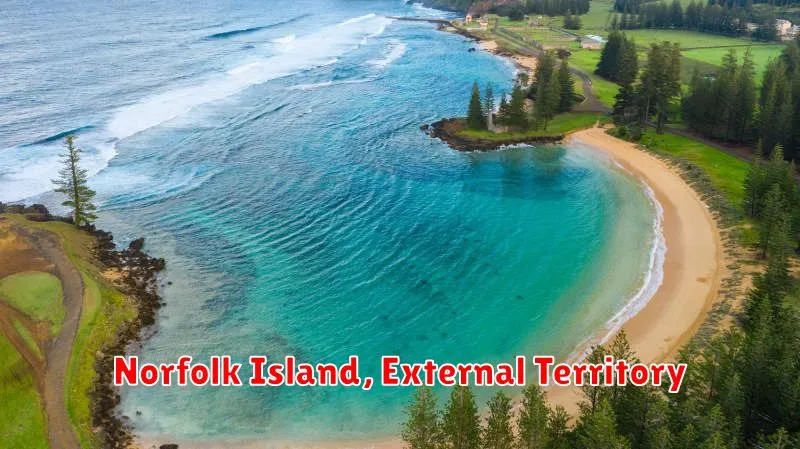
Norfolk Island, while not technically part of Australia proper, is an external territory offering a unique island experience. Subtropical in climate, the island boasts lush landscapes and dramatic coastal cliffs. Its history is intertwined with both British and Polynesian cultures, creating a fascinating blend evident in everything from the local dialect to the architecture.
Kingston, the historic administrative center, is a must-see. Explore the ruins of penal settlements and learn about the island’s intriguing past. Nature lovers will appreciate the Norfolk Island National Park, home to unique flora and fauna.

